The anatomy of a chicken is one of the first things you should learn about your hens when you first get them. You'll understand your birds better and when someone points to something weird on it and asks "What's that??" you'll know the answer.
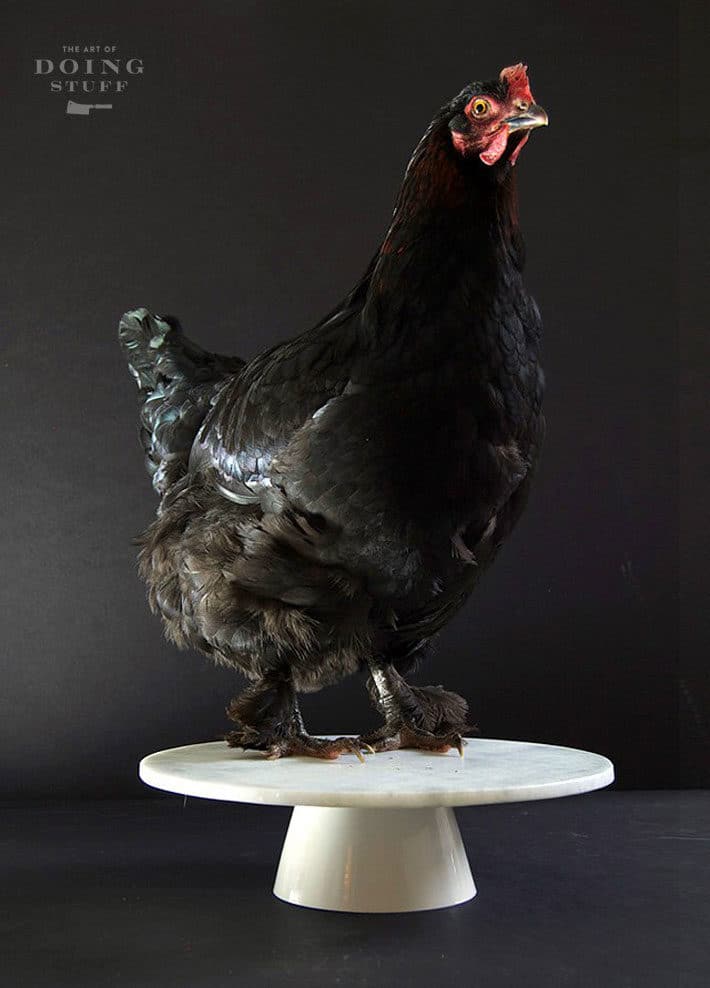
A few days ago 2 neighbour kids came to my door asking me where they could get a chick. One chick. They figured they could share it between them and also figured if anyone knew where one could procure such a thing it would be me.
Sadly for the girls I had to inform them that chickens are social animals and one little chick was likely to die of loneliness. They were quite distraught over this bit of news but accepted it.
What I didn't mention was the fact that chickens also get maggots up their anuses.
They are fun, they are cute, they are entertaining, but chickens are also, weird, complicated living creatures not unlike men. Or sourdough starter.
If you're going to have chickens, you should know a few things about their unique physical features.
Table of Contents
Chicken Combs - the blob on their head/beak
There are a whack of different chicken combs including the single comb, buttercup comb, strawberry comb, rose comb and pea comb.
The breeds I have had have either topped their heads with a single comb or a pea comb so we'll look at those.
As an aside, I find combs to be moderately repulsive. Perhaps it has something to do with the fact that they're an organ. You know, like a kidney or a heart.
The chicken's comb is considered an organ because it has such a vital function. With no sweat glands, chickens regulate their body temperature through their combs.
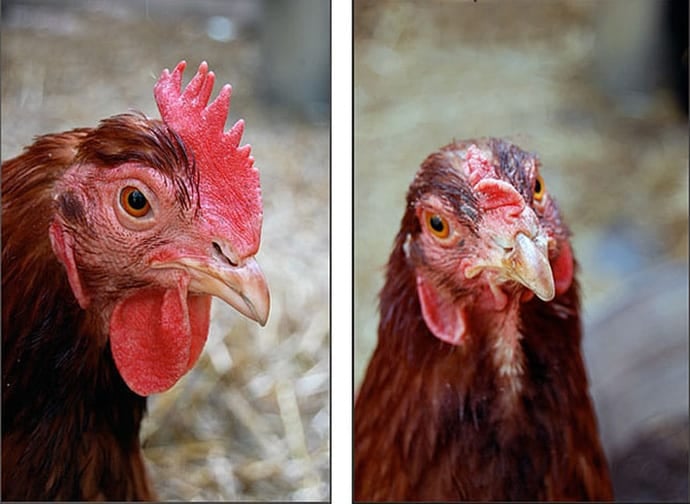
Norma (Rhode Island Red) with her single comb. Cuddles (mixed breed) with her pea comb.
Single comb - Single combs are the most common. They're a series of spikes that run from the chicken's beak to the back of their head.
Pea comb - Pea combs are a series of small, short bumps. It can be a single row of bumps, or 3 rows side by side.
Single Combs are dominant in Rhode Island Reds and Pea Combs are often seen in Ameraucana or Araucanas.
A grown chicken's comb should be red. If it isn't, and looks pale, you have an unwell chicken.
CHICKEN HEALTH
A pale chicken comb could be a sign of any of these conditions:
- internal parasites (too many worms in them)
- mites
- heat exhaustion
- moulting
Of all those things the only thing you don't have to worry about is moulting. If your chicken has a pale comb but isn't moulting and losing feathers there's something wrong and you'd better figure it out.
Chicken Wattles - the dangly bits below the beak
Just like combs, wattles come in a ranges of sizes from almost non existent to huge, flappy things.
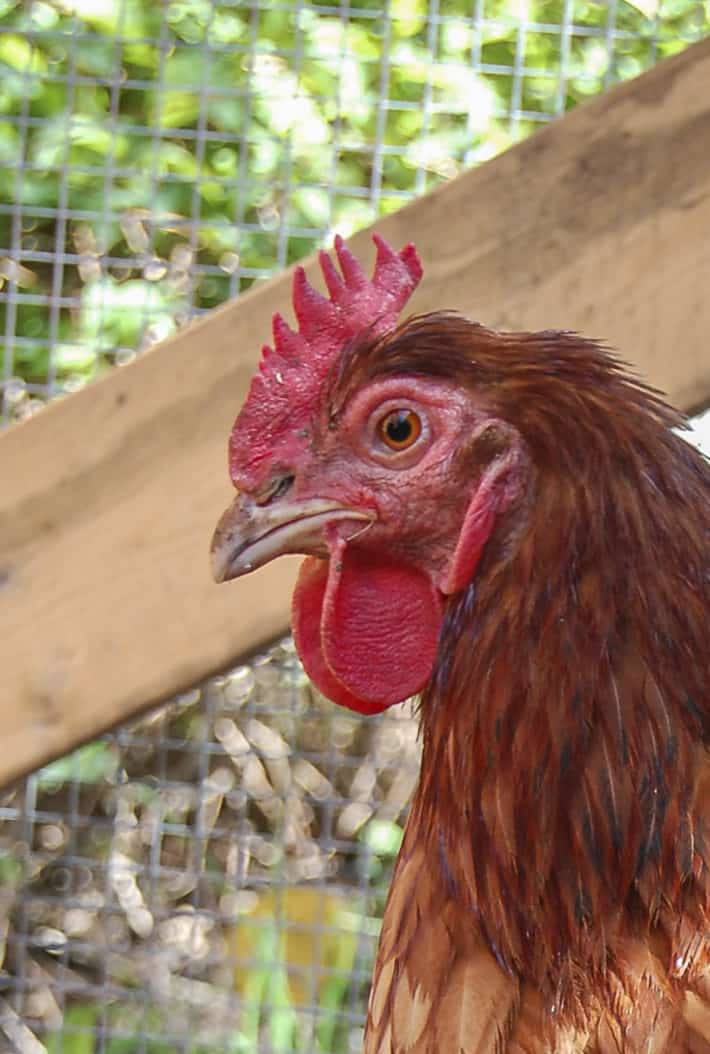
Wattles aren't just for laughing at. Blood flow from the comb to the wattle is what helps regulate the chicken's temperature to keep it cool in the heat.
Muffs & Beards
Muffs (around the cheeks) and beards (on the front of the neck) don't seem to have any cool purpose or super-power. They're like press on nails; they're just decorative.
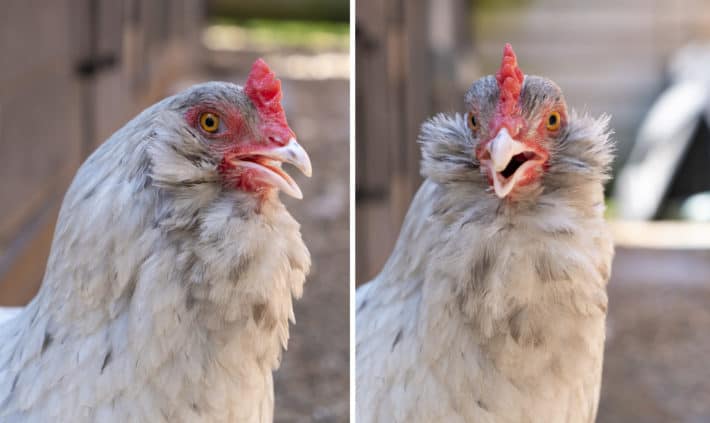
Baby has a beard.
Muffs and beards are seen on pure bred Ameraucana's and sometimes Ameraucana crosses like Olive Eggers or Easter Eggers.
Do Chickens Have Earlobes?
Don't be ridiculous. Of course they do. What else would they tug at the end of their comedy sketch show?
Earlobes are a good indication of what colour eggs your chicken will lay. The gene that's responsible for the colour of the earlobe is also responsible for the colour of the egg.
So. A chicken with white earlobes lays white eggs. A chicken with dark earlobes lays brown eggs. And a chicken with green earlobes will ... you guessed it ... lay eggs that taste a bit off. Just kidding. Green earlobes = green eggs. Ditto for blue.
There's no nutritional difference or taste difference between white, brown, blue or green eggs.
The chicken's ear is hidden in behind a tuft of feathers.
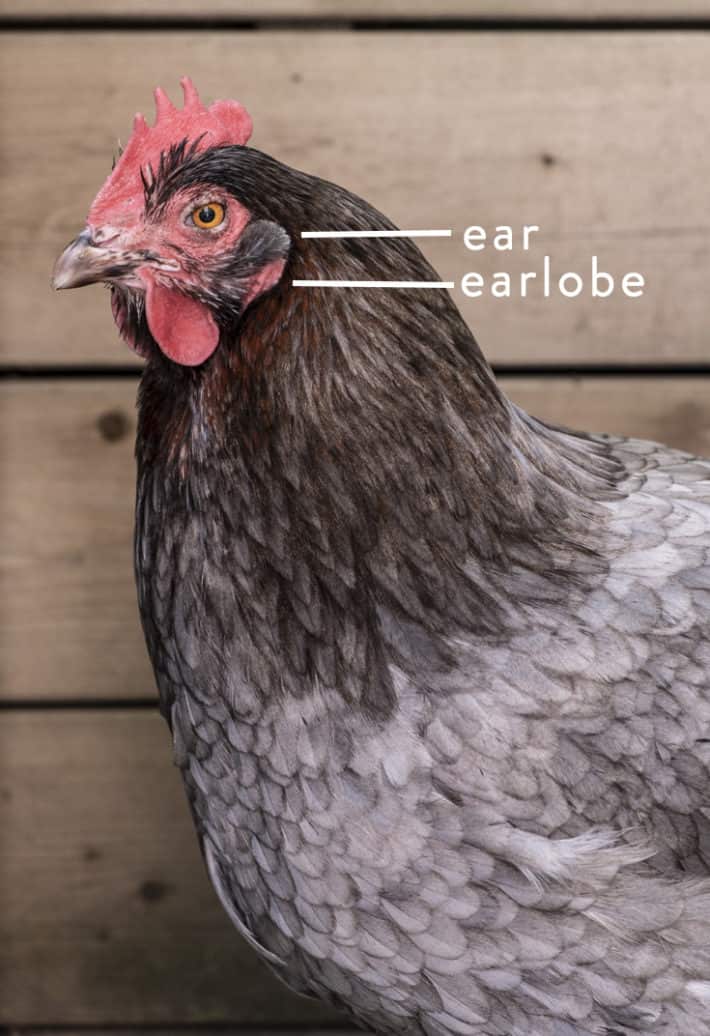
Beaks
Still with the whole chickens have no sweat glands thing so they need other ways to cool down, comes the beak.
Birds will open their beaks and pant just like a dog to cool down. Doing this, in combination with the work of those combs and wattles is their main defence against heat.
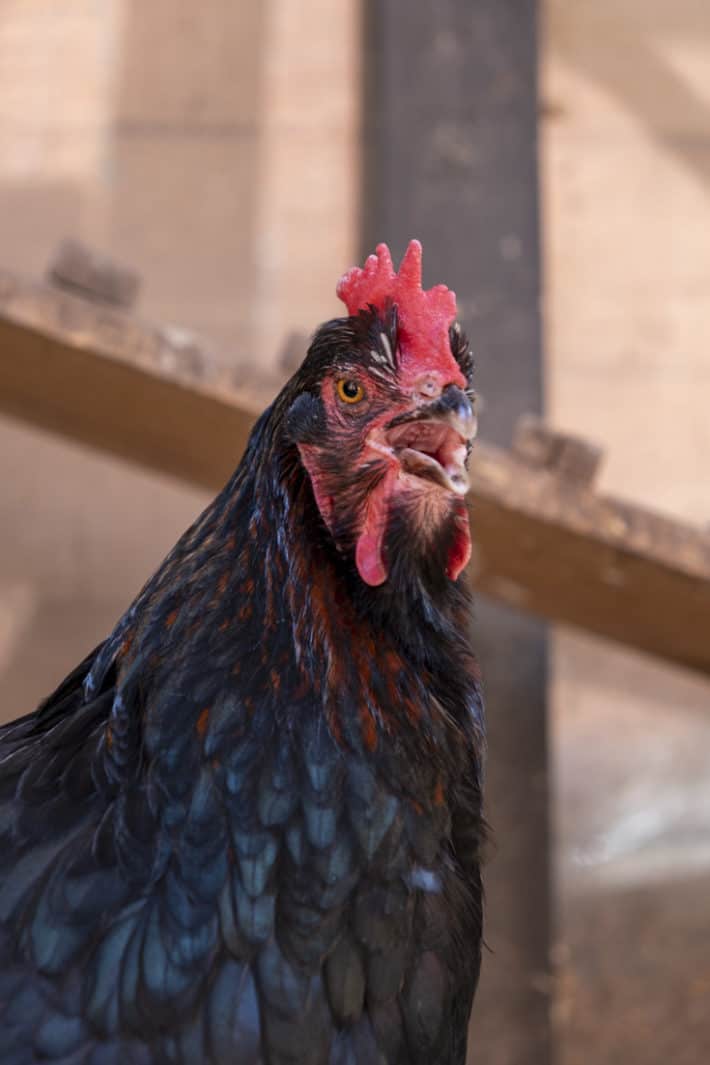
If you haven't figured it out by now, keeping cool is VERY important for chickens. I'm always asked about what I do with my chickens to protect them from the cold, but the cold doesn't really bother chickens, what with being covered in a duvet all year long.
The heat on the other hand will kill them quickly.
If your chicken is obviously in distress from the heat (panting vigorously, lethargic, slumped looking with a pale comb) you need to cool them down right away. Bring them inside an air conditioned house, give them cold treats like frozen grapes or hold them in a bucket of cool water to drop their body temperature.
Feathers
The duvet of feathers is what helps keeps the chicken warm in winter. In the cold months hens will fluff up their feathers creating more air pockets in between each feather that helps release and trap hot air from their bodies.
This is why chickens should NOT wear stupid sweaters. I wrote a whole post on why chickens shouldn't wear sweaters a while ago after chicken sweaters became a "thing" on Pinterest.
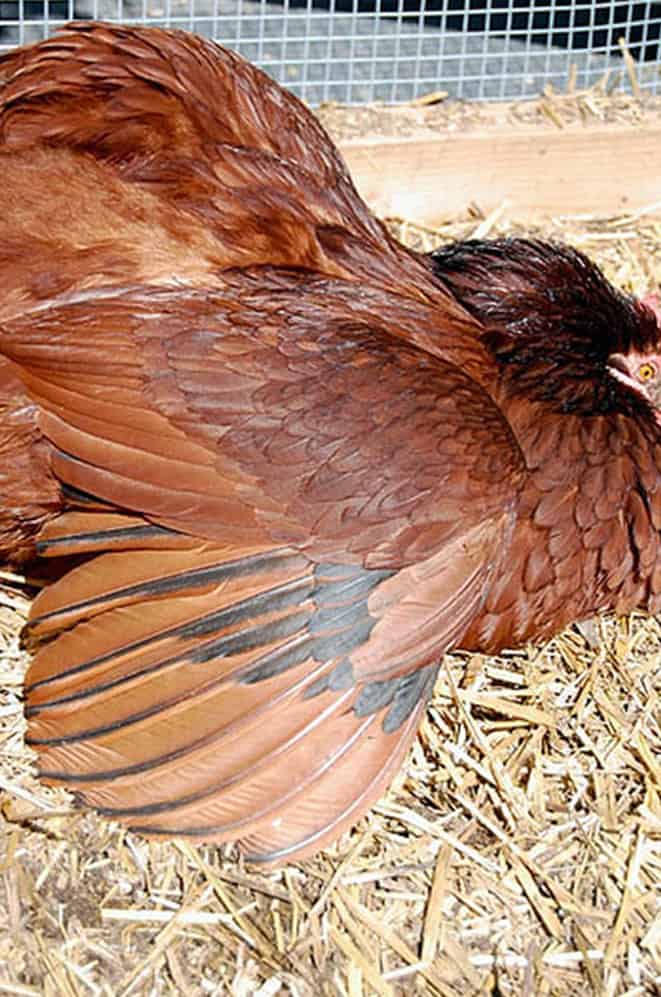
In the spring, they love the heat after months of cold and snow chickens will sun themselves by fluffing up their feathers and spreading out their wings to "catch" the heat and bask in it.
Chickens lose all of their feathers in the fall and grow new ones so their winter duvets are brand new, perfect and fluffy.
Would you like to save this stuff?
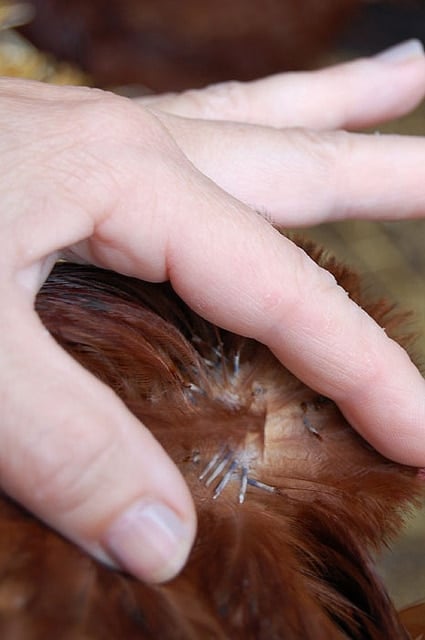
The new feathers that come in are called pin feathers. You should avoid touching the chicken where it has pin feathers coming in because it can be painful for them.
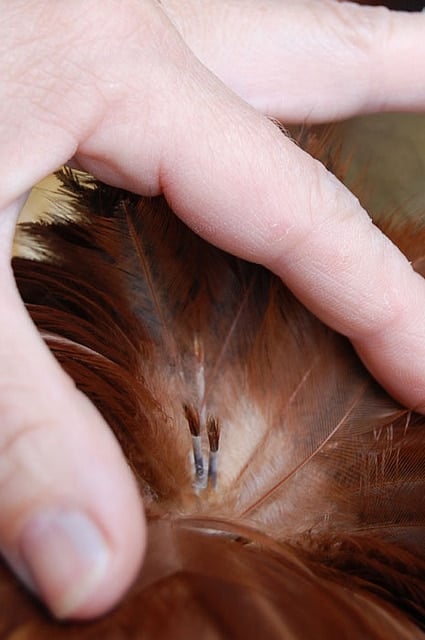
The Crop
When chickens eat, the food they eat for the day is stored in their crop. This sac at the very front and bottom of the chickens chest gets bigger and bigger as the day goes on and the chicken fills it more and more with food.
You can feel it with your fingers and you can even feel the food inside. If they've eaten whole grains it will feel rough and grainy.
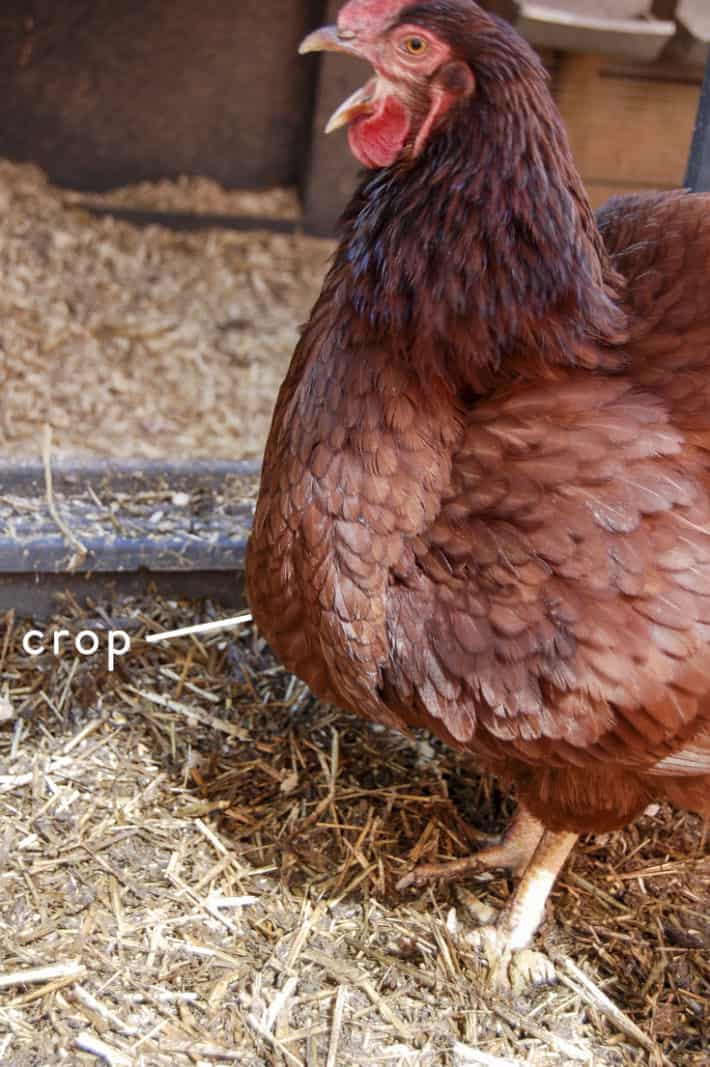
During the night when the chicken sleeps, the food moves from the crop to the chicken's gizzard where it's "chewed". Chicken don't have teeth, so they eat small pebbles and stones, which they store in their gizzard. These stones in their gizzard, "chew" up their food.
CHICKEN HEALTH
If you can smell something horrific in your chicken's mouth it could sour crop or an impacted crop, both of which can be deadly. I know. I lost my chicken Sweetie to an impacted crop.
If you're curious and not squeamish, I performed a necropsy on her to confirm what her cause of death was. You can see in this post.
Chicken Feet
Like earlobes, chickens have a variety of coloured feet and legs, but they don't necessarily correspond to what colour eggs they lay.
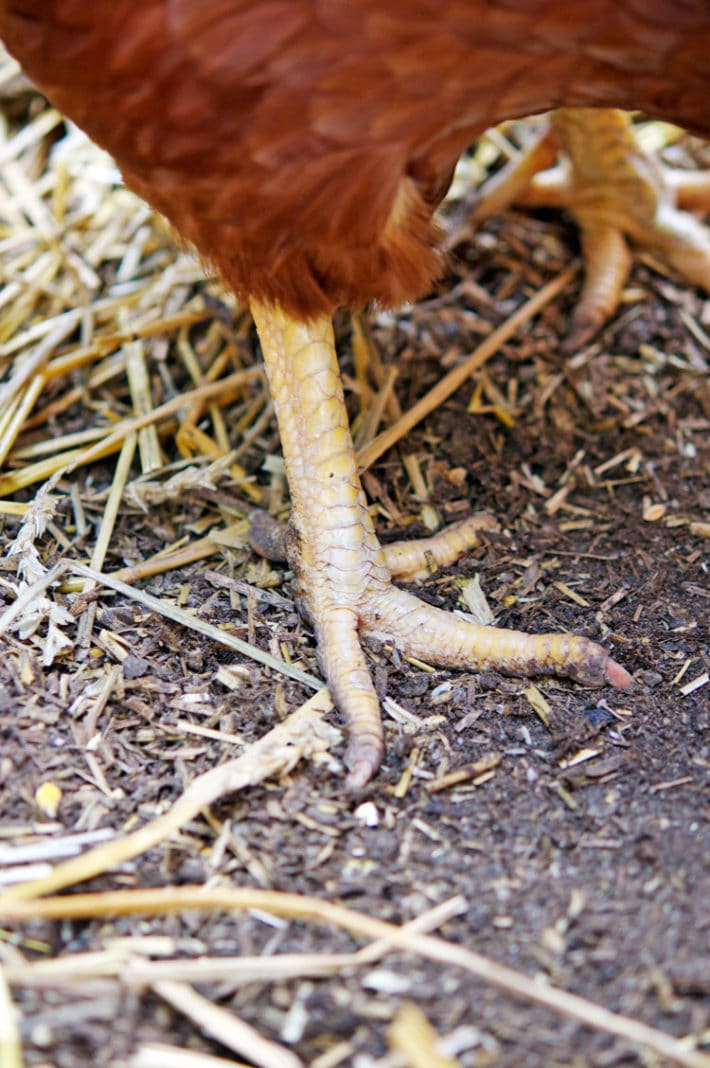
The majority of chickens have bare yellow or white legs and feet, but certain breeds have slate (Ameraucana), green (Auracana) or black legs (Sumatra). There are other colours, too, those are just the most popular.
Marans, a breed originally from France, can have slate or black legs.
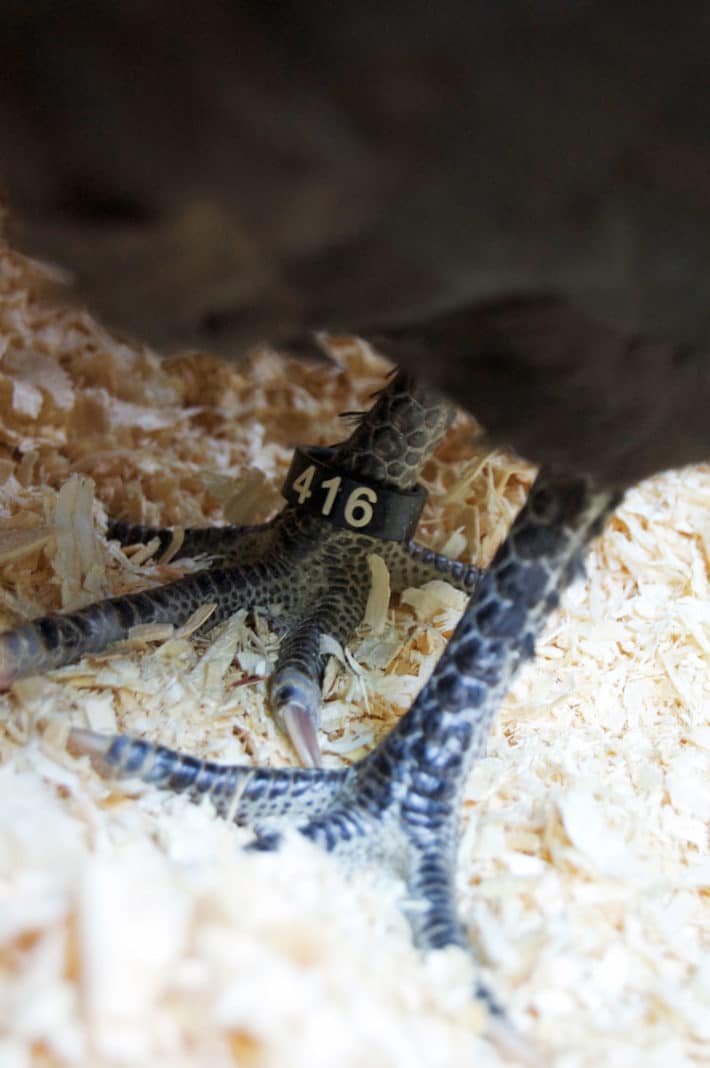
Ameraucana legs
Chicken legs (O.K., they're really called shanks) can also be feathered. Such is the case with Cochins and Black Copper Marans.

CHICKEN HEALTH
You should routinely check the soles of your chicken's feet. They're prone to something called bumblefoot which happens when the sole is injured and they get a bacterial infection. That infection can spread and death follows.
Death often follows anything going wrong with a chicken's health. Which makes the fact that they can survive being half ripped apart by a raccoon so weird.
Oil Gland
Even if you've owned chickens for a long time you might not know about this weird little nubby thing.
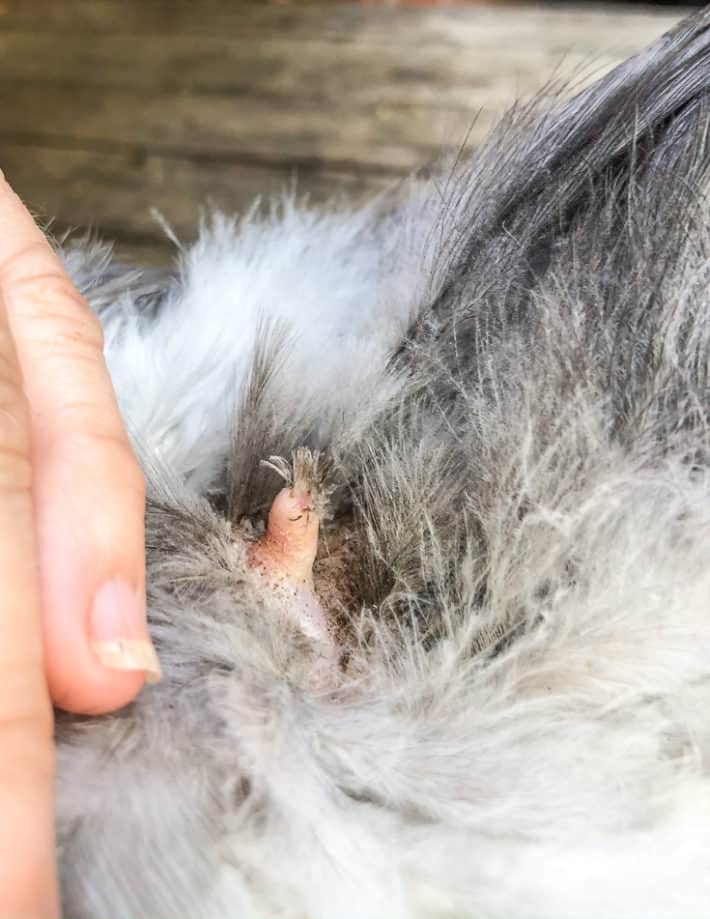
Yup. It's gross. This oil glad, that protrudes from the base of the chickens tail sticks up like a little finger. It secretes oil that the chicken uses for preening.
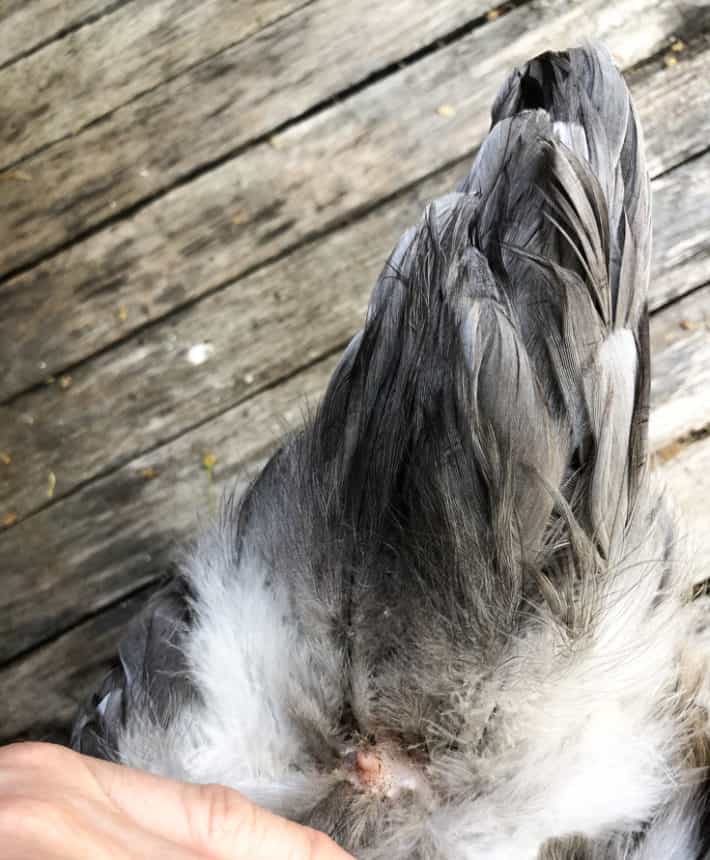
If you pay attention you'll notice your chicken constantly turning it's head around and gathering oil from this bump when it's cleaning itself.
The Vent
The vent is the workhorse of the chicken. It's the star of the show. The vent does it all. Poops, pees, lays an egg. It all comes out of the same place. The vent. Think of it as the chicken Vaganus.
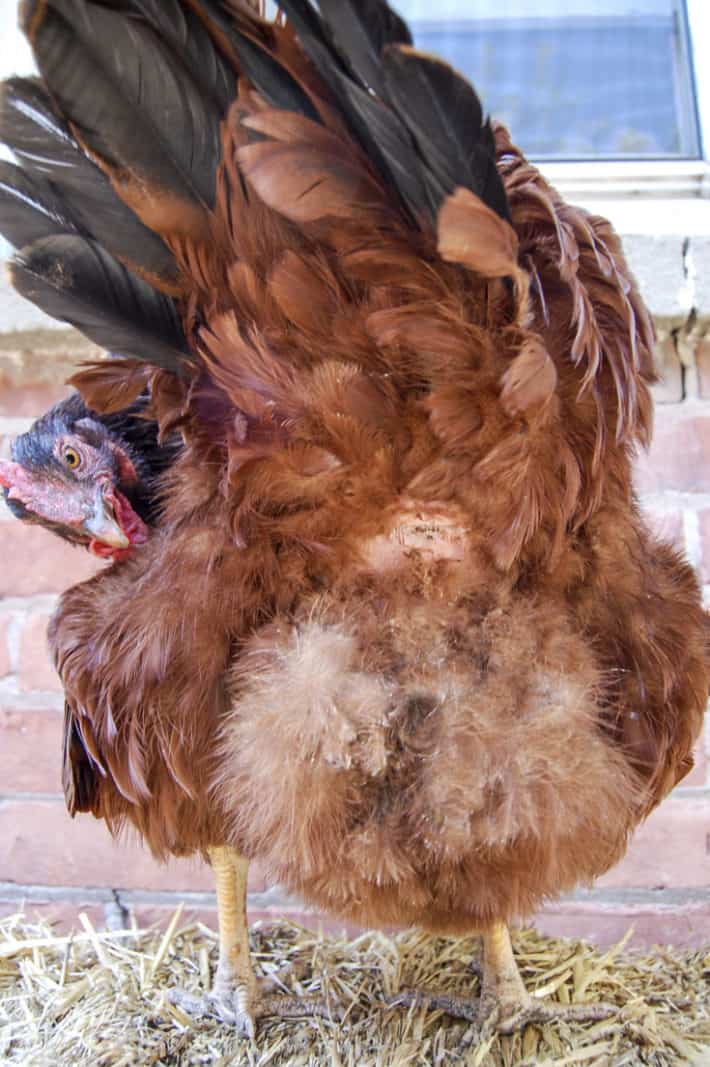
It should be clean(ish), free of poop not smelly. I mean, don't go sticking your nose in there, but if it smells like yeast around your chicken your hen could have vent gleet.
A vent that has poop stick in the feathers around it could ALSO end in death. I know. It just never ends does it? Because poop attracts flies and flies lay maggots. This life threatening condition is known as flystrike.
I've had to deal with flystrike a couple of times and if you think cleaning your chicken's bum of poop is horrifying, you'd better do it RIGHT NOW, because you are definitely NOT ready to deal with Flystrike.

The Tail
Roosters have plumed pretty ones, hens are smaller are less impressive.
BOTH have the polarizing "pope's nose".
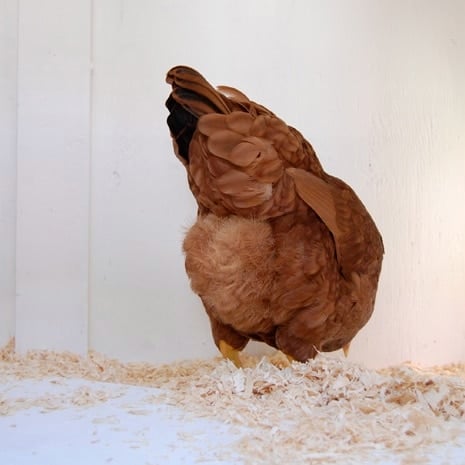
The pope's nose is the small, roundish, fatty disk that the long tail feathers sprout out of. It was my father's favourite part of the chicken for eating.
I just kind of ignore it.
One of the neighbour kids fathers cycled past me today, did a U turn and came back to thank me for advising them against chickens.
They were last seen researching rabbits.
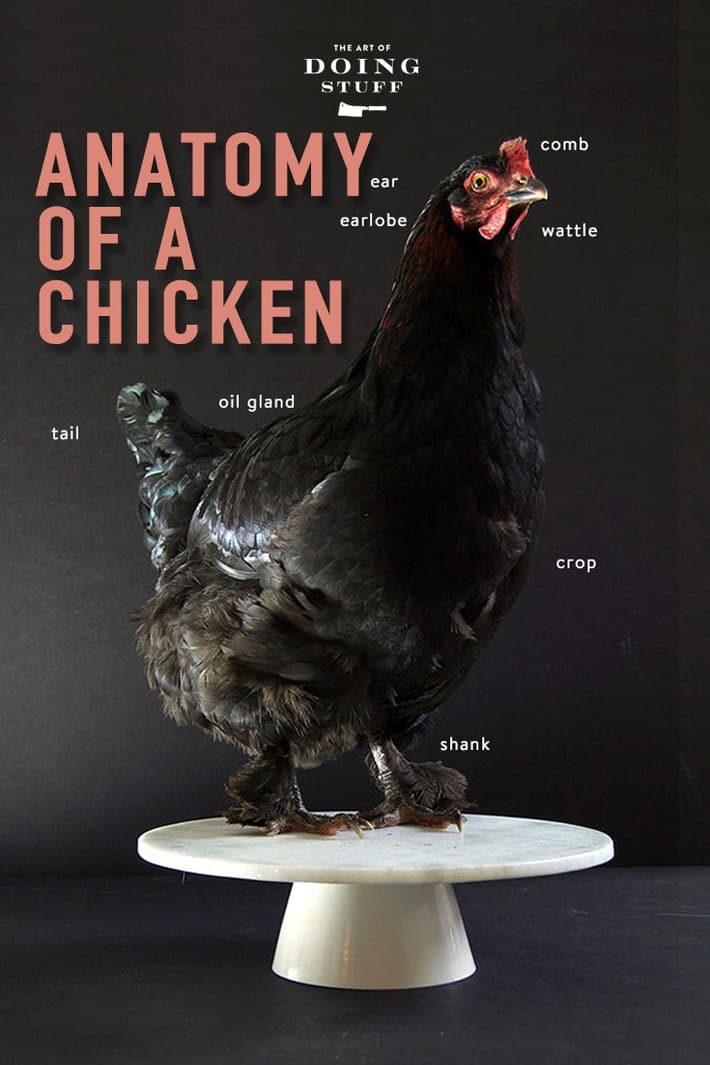

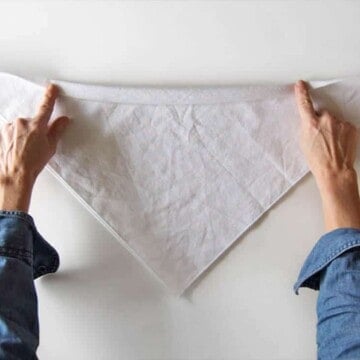

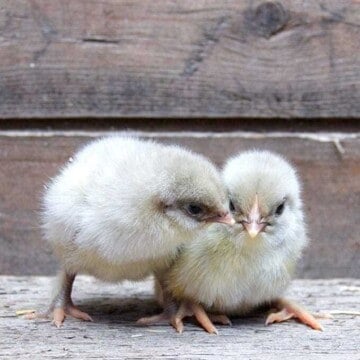
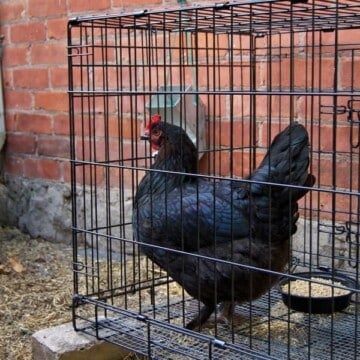
Deanna
Your writing style resonates with me like you wouldn't believe, it's like chatting with a sister I don't have! At any rate, this is a great post and you had the exact info I was looking for and even more great stuff that I've not read before. Thanks!
Kay
Non red comb = unwell chicken? Oh boy. I can't trust the rest of this info with that statement...
Karen
That's fine. It's always good to question what you read on the Internet. But there's no question that a chicken's comb colour can tell a lot about the chicken including it's health. I'm not sure how you would think that's an indication of unreliable information. ~ karen!
Clover Walton
You are amazing and this post is perfect. I have had hens for a week, had no idea what the oil gland was (thank you!) or what the vent was meant to look like, or that they have earlobes! Now I can figure out who's laying and who isn't! I have a lethargic hen and trying to figure out what's wrong with her, starting with anatomy helps, thank you! Also, vaganus = GENIUS
CJ Charles
Thank you so much for this post and actually your whole blog! I think you are the wittiest chicken-lover ever! You always make me laugh.
I truly appreciate all the "up close and personal" photos because I knew nothing of all these parts. After cleaning a horse's sheath, this is a walk in the park.
Karen
UCH. I've done that too. UCH!!! ~ karen!
pj
do you have topics about chicken vents gendering? the vents picture you have in this articles, is that hen's vent?
Karen
Yes, that's a hen's vent and no I haven't shown how to vent sex. :) ~ karen!
Keith Allison
Sorry, folks, but I think I invented the word Vaganus. I just never wrote it down. You know, to avoid embarrassing the chickens. Butt, I guess we're WAY past that now. :)
Scout
Ha! This is fascinating and weird and I have twin tweens who will love this info. All of it. You posted an intro- science class. And it might give me a break from the spiders and centipedes they're obsessed with now. Thank you. I'll tell Santa good things about you.
Karen
Oh thank you! I'm glad to have helped you side step centipedes. ~ karen!
Kat
The look on the chickens face is priceless. "What's so interesting back there? I wanna see!"
LOL!
I have debated with myself for years about getting chickens and quail when I finally have my own place.
Not quite sure why, but this post has decided definitely "no" for me.
Unless I end up living with someone very responsible who will take care of them. And a second person to fill in when necessary.
And I will only have to pet them, and hold them... while wearing a hazmat suit. ;)
P.S.
Diatomous earth can also be used around the house, basement, and kitchen to kill the centi- milli- pede things!
Putting around flowers and hostas should keep slugs off too!
Bertie George
Karen! Please post how to clean a hen’s poopy bum. I don’t want to google some lame-ass wiki-how when I know you’ll dish the straight goods.
Karen
To clean their bums, I put on a pair of rubber gloves and hold the chicken tightly and then hose their bum so it's wet. Then I just start rubbing their poopy feathers between my fingers until it crumbles away. It takes a while, but that's how to do it so you don't hurt them or pull their feathers out. You may need to add a touch of soap too. ~ karen!
Darlene E Meyers
I so miss photos and videos of your chickens. 😔
eva @ StyleMyThrift
i was hoping to finally get 4 chickens next spring...your article was very informative!...actually seems like chickens are high maintenance? or really not?....
ps i thought you would talk about egg laying!!! i really wanted to know how that's done!
xo Eva
Karen
This was a strictly "outside the chicken" anatomy lesson. :) Egg laying is a wholeeeeeeeee other thing. ~ karen!
Jean
I laughed out loud literally!! I love your wit and way to put things in words. Vaganus sounds like the name of a planet.
Karen
It does, lol! ~ karen
Christina
My only 5-yr-old Polish girl had gone missing, so I assumed she had flown the coop and been taken away by a fox. I searched every day and nothing...on the 5th day, I was closing my coop doors and an upside down water bucket in the corner started moving....no idea how the poor girl got under there or why she didn't simply say something....I'm in the coop multiple times a day. She couldn't stand and had no food or water for 5 days....she was kinda loopy and walking in circles for a few minutes, but headed straight for the waterer and food. Next morning, she was right back to her sassy old self as if nothing had happened...but her tail feathers will be the shape of the bucket for some time to come, I'm afraid. So not only can they survive a raccoon attack, but a toppled bucket as well!
Karen
I'm stunned she lived for 5 days without water. That's almost impossible! In fact I would have said it definitely was impossible! That's a strong chicken. ~ karen!
Melissa White
❤️ the Carol Burnett reference!
Karen
:) ~ karen!
Susan
Glad these older posts are available for some of us to “catch up” Wonderfully done. Great photos too.
Karen
Thanks Susan! I redid a lot of the photos. Republishing gives me a chance to improve the posts a LOT for readers. ~ karen!
Kirsten
Aw chickens..... I have been yearning for a post about them. I know its gardening season, but i love hearing about your chickens.
Karen
Well then this post was just for you. ;) ~ karen!
ann adams
Please ! My hen had something going on ,so I picked her up to check her cloaca she had something comeing out , so I tried to help her ...it was jagged ( I think IT WAS stick) up inside her and I pulled it out ....she seems to be ok ,but I have never seen this .....WHAT COULD IT HAVE BEEN HAVE YOU EVER HEARD OF THIS ...